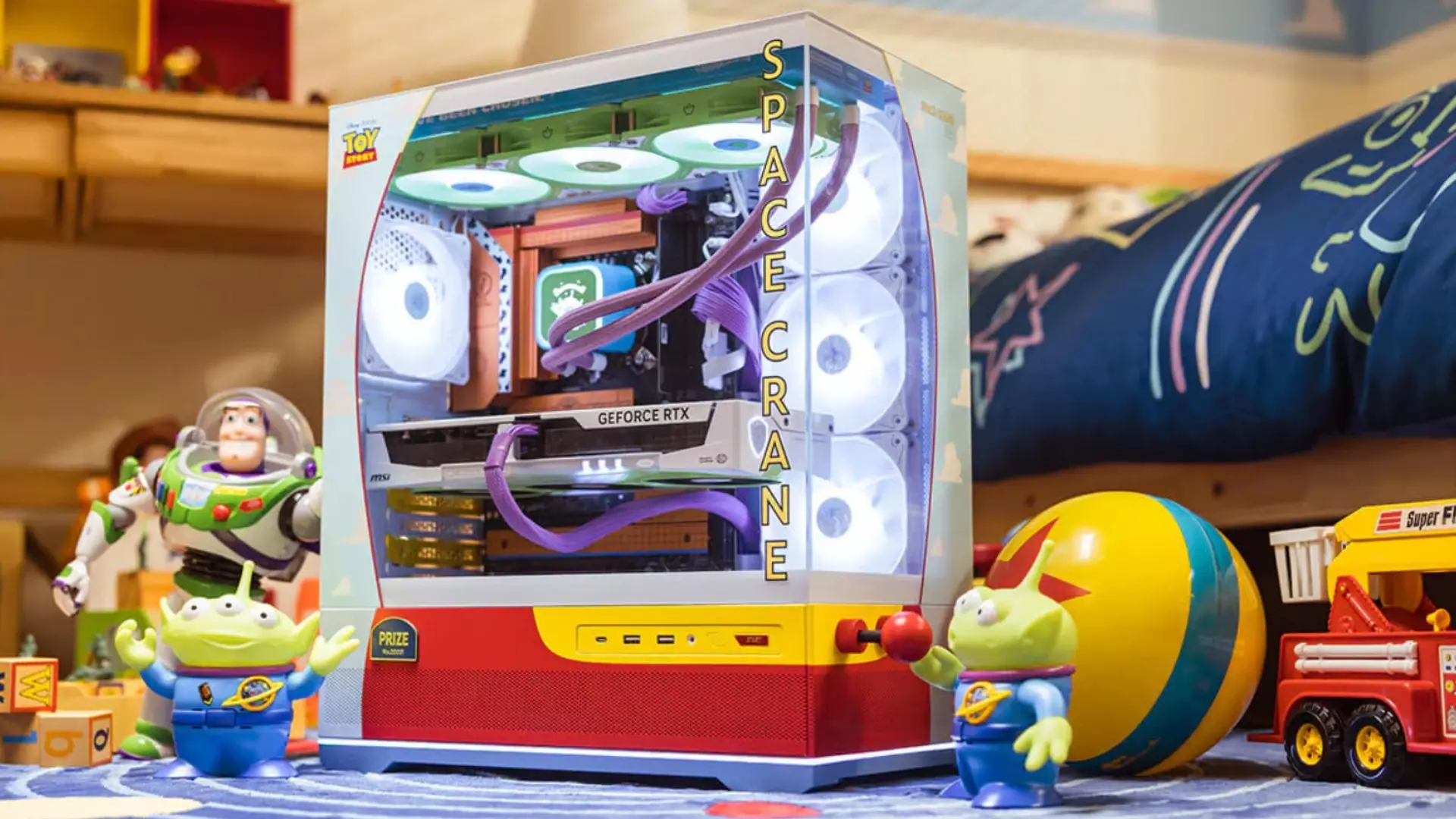For those who cherish the whimsical charm of Disney and Pixar, MSI has concocted an unprecedented homage to their beloved Toy Story franchise with a gaming rig that is as flamboyant as it is outlandish. Priced at approximately NT$79,900 (around $2,653), this device emerges not only as a gaming PC but as a collectible tech piece that will undoubtedly make your friends green with envy—or maybe just a tad embarrassed when they step inside your gaming sanctuary. Designed to mark the 30th anniversary of the original Toy Story film, this rig offers a unique blend of nostalgia, modern technology, and sheer audacity.
A Design Statement Like No Other
At first glance, the Toy Story rig dazzles with its crane machine-style casing, a vibrant kaleidoscope of colors that would make any toy playground envious. MSI has managed to intertwine the nostalgic essence of Toy Story with contemporary gaming aesthetics, creating a striking visual presence. The bottom displays bright yellows and deep reds, climbing into azure skies at the top—each hue reflects the playful spirit of the animated classic. The addition of a claw machine joystick and “prize box” decorations adds an interactive charm, transforming the gaming experience into something akin to a carnival. While some may find this chaotic mixture appealing, others may see it as a charming but over-the-top spectacle, teetering on the edge of kitsch.
Specifications: A Mixed Bag
Beneath the vibrant exterior lies a configuration that raises eyebrows. The Toy Story-themed gaming rig is enhanced with a respectable GeForce RTX 5070, paired with the MSI Z890 Gaming Plus motherboard—components that would undoubtedly satisfy casual gamers. However, the inclusion of an Intel Core Ultra 5 245K as the primary processor serves as a confusing choice. In a market teeming with superior alternatives, the Core Ultra 5 feels disappointingly out of place, undercutting the rig’s overall value. In a world where gamers are increasingly demanding high-performance computing power, settling for a budget-oriented CPU is akin to putting a toy car engine in a race car. It raises questions about MSI’s pricing strategy when superior options exist at more competitive rates.
Value vs. Vibes
One can’t help but draw comparisons with other options on the market. A similarly spec’d rig with a Ryzen 7 9800X3D is currently available for around $2,100, while alternatives featuring the RTX 5070 Ti reach just $2,300, both boasting significantly stronger gaming performance. This juxtaposition prompts potential buyers to evaluate their priorities—are they purchasing this rig solely for its nostalgic value, or do they seek a powerful gaming experience? For many Pixar enthusiasts, the aesthetic appeal may outweigh the practical drawbacks; the question remains, at what cost?
Commitment to Theme
Despite its unimpressive specifications, should we applaud MSI for their thematic commitment? The custom designs—where the motherboard is inspired by Woody, the GPU channels Buzz Lightyear, and even the power supply resembles Emperor Zurg—are charming interpretations of beloved characters, invoking both nostalgia and a sense of whimsy. For the true Pixar aficionados, MSI has delivered a degree of uniqueness that can’t be easily replicated in standard gaming rigs. Questions about performance are overshadowed by the appeal of owning a conversation starter, a testament to the intricate connection between gaming, entertainment, and childhood nostalgia.
The Thoughts of a Gamer
As a gamer and a fan of animated stories, I find myself torn. On one hand, I admire MSI’s audacious creativity in crafting something so directly tied to the Toy Story legacy. On the other, I wish they had leveraged that creative energy into a more performance-oriented build. It’s exhilarating to own a piece of tech that not only serves a practical purpose but also strikes a chord emotionally. Yet, the ultimate gaming experience demands more than just flair; it longs for performance to match the vivid imagery.
Ultimately, this Toy Story rig stands as a cultural artifact, an alliance of fun aesthetics and gaming culture, provoking both admiration and skepticism in equal measure. Whether it becomes a cherished centerpiece or sits in the corner as a whimsical reminder of Toy Story nostalgia is yet to be seen, leaving us to ponder how to balance passion and performance in our gaming ecosystems.

